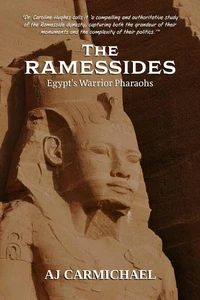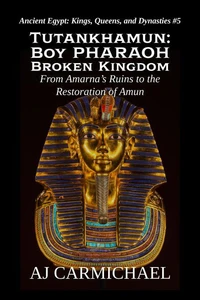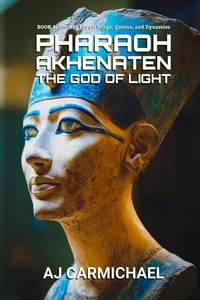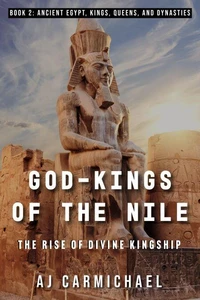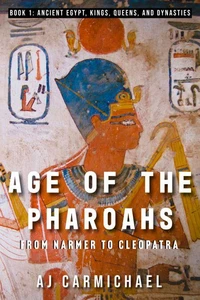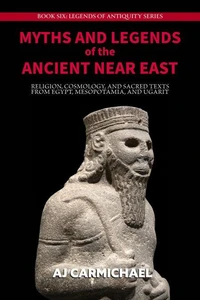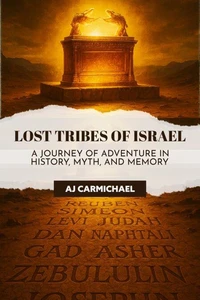Ancient Greece, Rise and Fall. Ancient Worlds and Civilizations, #6
Par :Formats :
Disponible dans votre compte client Decitre ou Furet du Nord dès validation de votre commande. Le format ePub est :
- Compatible avec une lecture sur My Vivlio (smartphone, tablette, ordinateur)
- Compatible avec une lecture sur liseuses Vivlio
- Pour les liseuses autres que Vivlio, vous devez utiliser le logiciel Adobe Digital Edition. Non compatible avec la lecture sur les liseuses Kindle, Remarkable et Sony
 , qui est-ce ?
, qui est-ce ?Notre partenaire de plateforme de lecture numérique où vous retrouverez l'ensemble de vos ebooks gratuitement
Pour en savoir plus sur nos ebooks, consultez notre aide en ligne ici
- FormatePub
- ISBN8215351116
- EAN9798215351116
- Date de parution12/01/2023
- Protection num.pas de protection
- Infos supplémentairesepub
- ÉditeurWMG Publishing
Résumé
The Greek Empire's Territory in the year 478 BC, was geographically dominated by two peninsulas. Italy splits Europe into the eastern and western half, while Greece consists of two large peninsulas that extend from Europe into the Mediterranean. Separating the eastern region. The Greek world consisted of mainland Greece, the islands off its west coast, and the Aegean Sea, which separated mainland Greece from Asia Minor and was confined to the east by the coast of Asia Minor, the coast of Thrace, and the island of Crete.
Mountains separate the Greek mainland into several, mostly minor, livable zones, while sea inlets split it into northern and central Greece and the Peloponnese, which are connected by the Corinth Isthmus. Egypt and the Near East developed advanced civilizations earlier than the northern and western regions. The most notable Greek colonies were in the south and east, and there was a tendency to seek interaction with and embrace the south and east cultures.
The earliest sophisticated civilizations emerged in the Greek area during the bronze period. During the second millennium, the Minoan culture in Crete, the Cycladic culture in the Aegean, and the Mycenaean culture on the mainland all existed; starting about 1400, the Mycenaeans influenced Crete and the Cyclades. The Mycenaeans spoke Greek, but the Minoans spoke a different language, and no Cycladic writing remained.
This was the location of heroic stories in ancient Greek literature. Large kingdoms supported life, centered on opulent palaces, and were governed by bureaucratic governments. During an era of calamity and population upheavals whose reasons are unclear, this planet vanished between 1200 and 1000 BCE.
Mountains separate the Greek mainland into several, mostly minor, livable zones, while sea inlets split it into northern and central Greece and the Peloponnese, which are connected by the Corinth Isthmus. Egypt and the Near East developed advanced civilizations earlier than the northern and western regions. The most notable Greek colonies were in the south and east, and there was a tendency to seek interaction with and embrace the south and east cultures.
The earliest sophisticated civilizations emerged in the Greek area during the bronze period. During the second millennium, the Minoan culture in Crete, the Cycladic culture in the Aegean, and the Mycenaean culture on the mainland all existed; starting about 1400, the Mycenaeans influenced Crete and the Cyclades. The Mycenaeans spoke Greek, but the Minoans spoke a different language, and no Cycladic writing remained.
This was the location of heroic stories in ancient Greek literature. Large kingdoms supported life, centered on opulent palaces, and were governed by bureaucratic governments. During an era of calamity and population upheavals whose reasons are unclear, this planet vanished between 1200 and 1000 BCE.
The Greek Empire's Territory in the year 478 BC, was geographically dominated by two peninsulas. Italy splits Europe into the eastern and western half, while Greece consists of two large peninsulas that extend from Europe into the Mediterranean. Separating the eastern region. The Greek world consisted of mainland Greece, the islands off its west coast, and the Aegean Sea, which separated mainland Greece from Asia Minor and was confined to the east by the coast of Asia Minor, the coast of Thrace, and the island of Crete.
Mountains separate the Greek mainland into several, mostly minor, livable zones, while sea inlets split it into northern and central Greece and the Peloponnese, which are connected by the Corinth Isthmus. Egypt and the Near East developed advanced civilizations earlier than the northern and western regions. The most notable Greek colonies were in the south and east, and there was a tendency to seek interaction with and embrace the south and east cultures.
The earliest sophisticated civilizations emerged in the Greek area during the bronze period. During the second millennium, the Minoan culture in Crete, the Cycladic culture in the Aegean, and the Mycenaean culture on the mainland all existed; starting about 1400, the Mycenaeans influenced Crete and the Cyclades. The Mycenaeans spoke Greek, but the Minoans spoke a different language, and no Cycladic writing remained.
This was the location of heroic stories in ancient Greek literature. Large kingdoms supported life, centered on opulent palaces, and were governed by bureaucratic governments. During an era of calamity and population upheavals whose reasons are unclear, this planet vanished between 1200 and 1000 BCE.
Mountains separate the Greek mainland into several, mostly minor, livable zones, while sea inlets split it into northern and central Greece and the Peloponnese, which are connected by the Corinth Isthmus. Egypt and the Near East developed advanced civilizations earlier than the northern and western regions. The most notable Greek colonies were in the south and east, and there was a tendency to seek interaction with and embrace the south and east cultures.
The earliest sophisticated civilizations emerged in the Greek area during the bronze period. During the second millennium, the Minoan culture in Crete, the Cycladic culture in the Aegean, and the Mycenaean culture on the mainland all existed; starting about 1400, the Mycenaeans influenced Crete and the Cyclades. The Mycenaeans spoke Greek, but the Minoans spoke a different language, and no Cycladic writing remained.
This was the location of heroic stories in ancient Greek literature. Large kingdoms supported life, centered on opulent palaces, and were governed by bureaucratic governments. During an era of calamity and population upheavals whose reasons are unclear, this planet vanished between 1200 and 1000 BCE.




